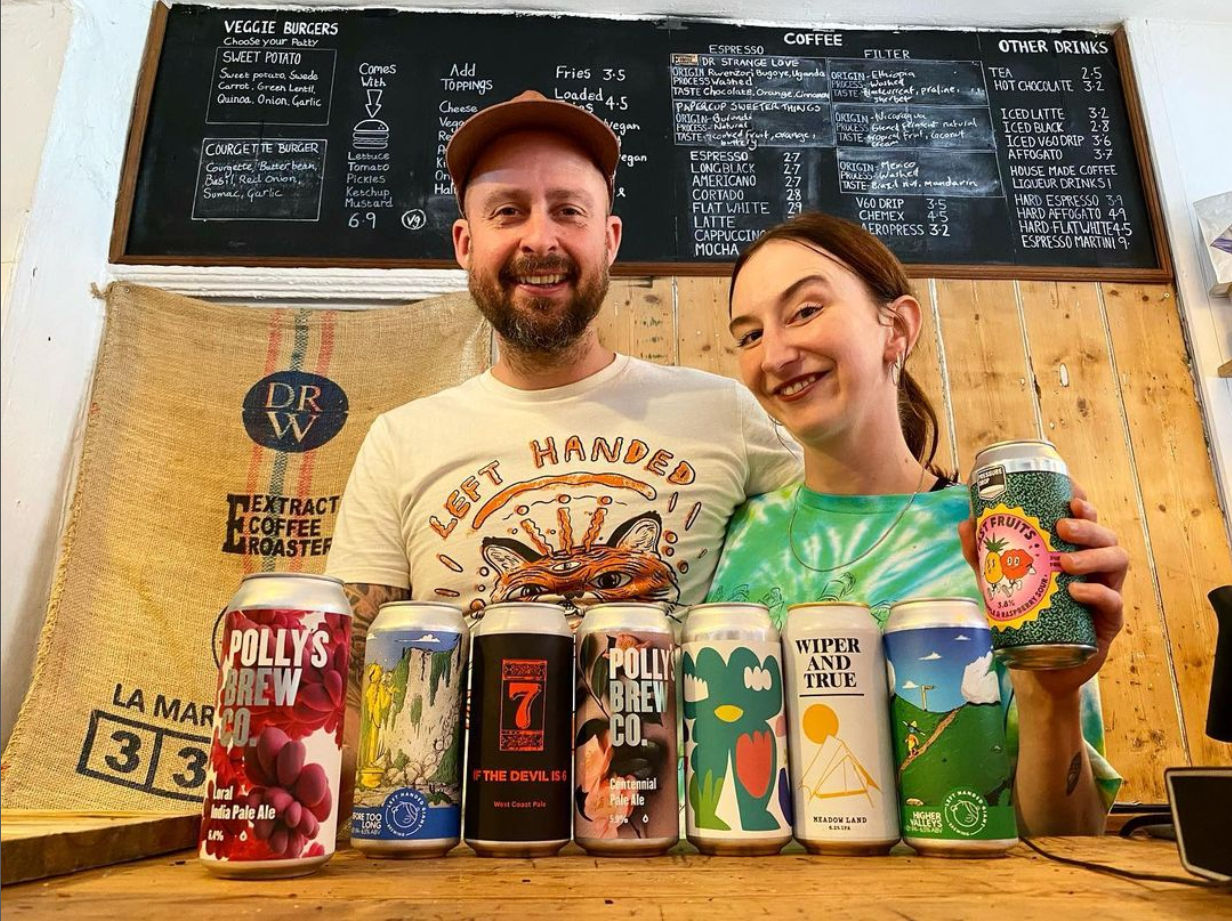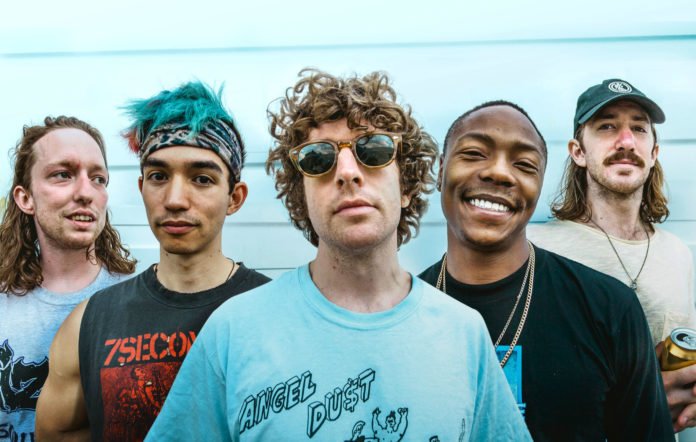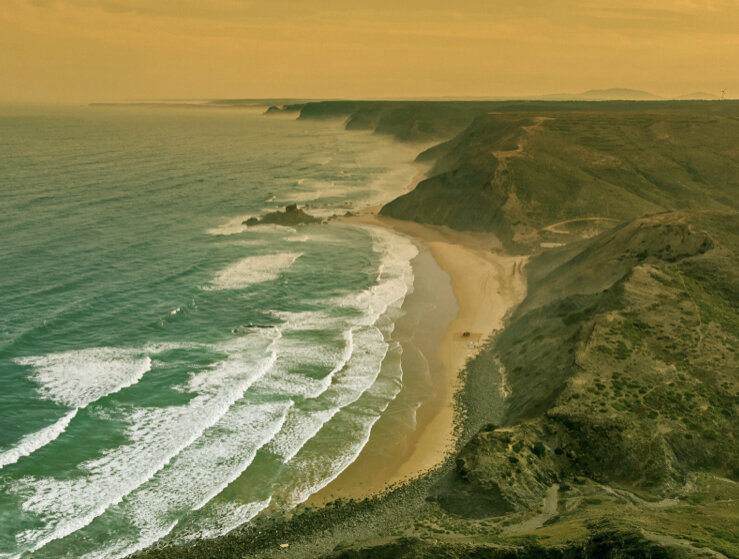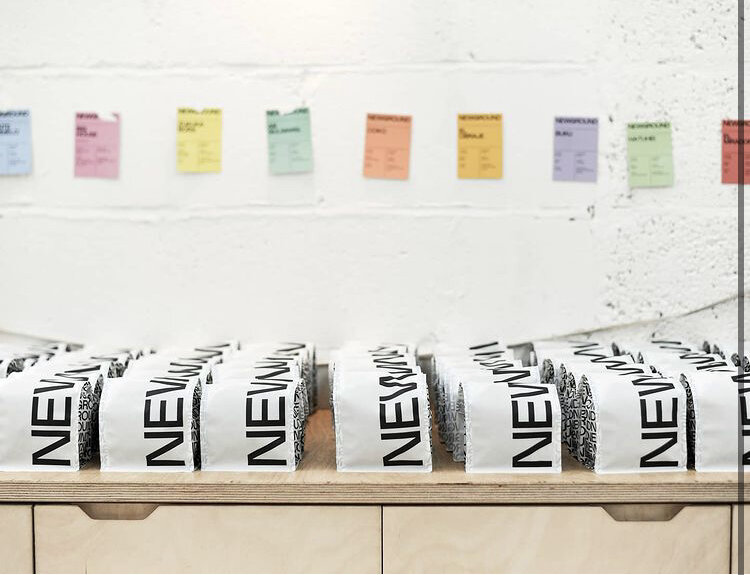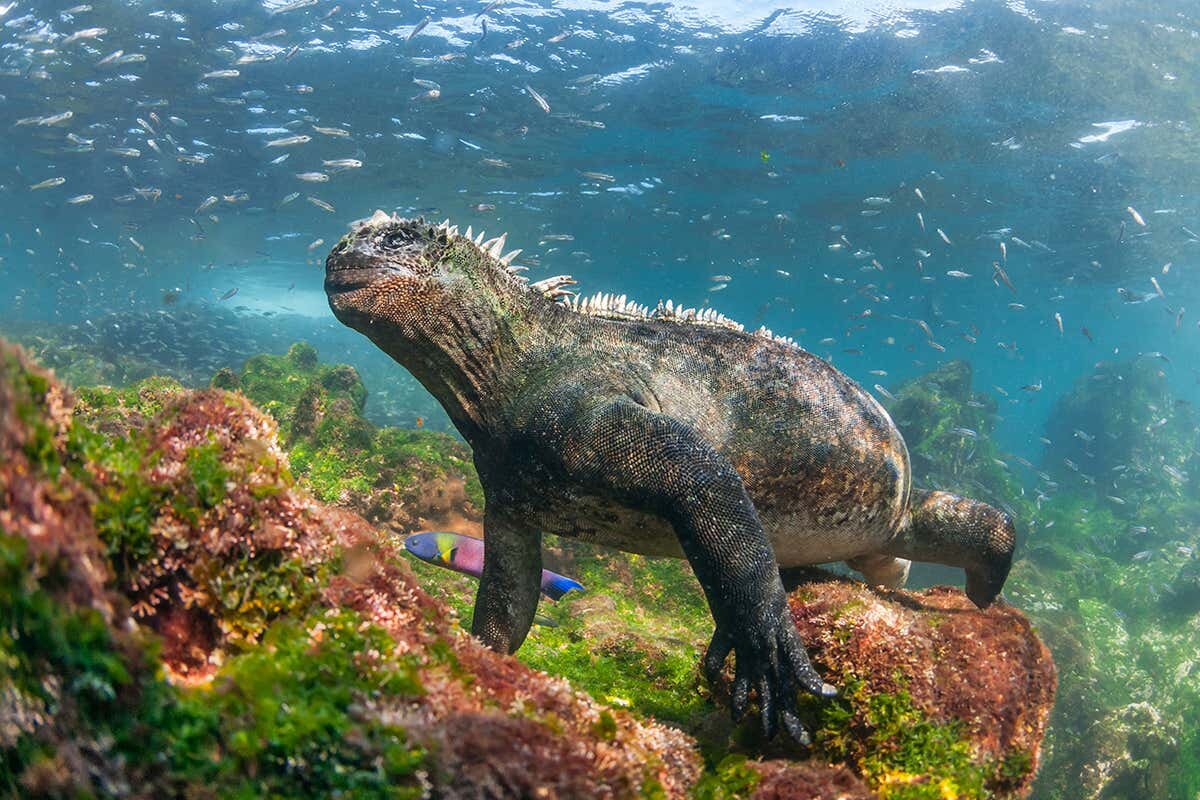Welcome to our Artwave special newsletter!
Doesn’t it always feel so good to be welcomed?
For a bonus welcome, you can also visit us at the cafe Wednesday & Thursday 10am-3pm, Friday 10am-10pm and Saturday 10am-5pm!
Artwave 2023
Thanks to everyone who came to our first weekend of Artwave! We got off to a great start meeting lots of lovely art enthusiasts!
Throughout September the café will be full of art inspired by the sea, nature and geometric forms.
We have landscape photography by @finncurry, painting and prints by @nataliefoster.art, printmaking and paperfolding by @gracedunford and lino prints by @vickygcayon. Plus our usual speciality coffee, cakes, veggie burgers and craft beer.
www.artwavefestival.org
Grace Dunford
Grace has been making some incredible embroidered folded paper works - you really have to see them up close for the full effect of combining printed pattern, folded dimensions and embroidered connective lines. Grace also has bright bold nature-themed screenprints on sale alongside a selection of greeting cards.
www.instagram.com/gracedunford
Finn Curry
Finn Curry is a landscape photographer based in East Sussex. He focuses mainly on the coast and woodlands near his home and also visits North West Scotland frequently.
In his photography, he aims to portray a sense of calm and soulful moodiness. For this reason, he prefers to work very early in the morning or during stormy weather when there aren't many people about.
www.instagram.com/finncurry
www.finncurry.co.uk
Natalie Foster
Natalie is a Sussex-based mixed-media artist and designer. Her work follows themes of nature and the coast, blending detailed observation with expressive pattern and texture.
For Artwave this year she has explored working in acrylic paint, creating a series of coastal landscapes that hold special memories. This series is available as original paintings or giclée prints.
www.instagram.com/nataliefoster.art
www.nataliefoster.art
Vicky Gomez
Vicky Gomez is a printmaker based in Hove, UK. Her passion for printmaking grew during her time at Accademi di Brera in Milan while participating in an Erasmus program. After many years working on Digital she felt the need to return to traditional methods so she started printing again.
Her family was always connected to the sea and the coast in the north of Spain, it has always been a significant source of inspiration for her artwork. Even now, living on the coast again, this subject continues to be a recurrent theme in her work, along with other subjects like nature, films, and popular culture. Each of her prints carries a touch of fantasy, adding an imaginative element to the artwork.
Over the past few years, She has been working on her printmaking skills, exploring various techniques and experimenting with different materials.
www.instagram.com/vickygcayon
www.vickygomez.co.uk
Burger of the Month
Our patty this month is sure to get you feeling fine about the end of summer, or endless summer like this hot week - it's the Thai Red Curry burger! It's made with pumpkin, spring onions, gluten-free soy sauce, coconut & Thai red curry paste. We recommend topping it with soy-soaked pineapple rings and our homemade satay sauce!
Our toppings are Monterey Jack cheese, Applewood vegan cheese, halloumi, onion rings, avocado, homemade kimchi and salsa.
Our loaded fries are going strong. These fries are made with our air fryer, cooked with absolutely no added oil, while keeping their golden crispy crunch. Load them with either vegan/dairy cheese and red onion chutney/kimchi, or salsa and avocado.
Guest Coffee
We have 4 delicious single origin coffees to take away in beautifully illustrated boxes by Craft House Coffee.
"One of our main goals are to make sure costumers are never left in the dark. Its all about loving our product but understanding the culture too - no compromise for absolute quality. Anyone who buys our product will understand our passion to create the best possible coffee experience."
Guest Beers
We love you all so much that we sent Bun + Bean resident at large Rob The Dog Runner to Bruxelles, again, to retrieve a selection of beautiful Belgian beers to go alongside our usual faves. You can find a selection of delights by Left Handed Giant, Pollys, Wiper and True, Pomona Island and more... along with a selection of craft ciders and wines, including Nice Wines,
and soft drinks including Old Tree kombucha.
We hope you all have a smooth transition into September and term time, we'll be here to ease you into the morning with your coffee of choice, as well as wind down on Friday evenings with burgers 'n beers!
Hollie & Jamie
Bun + Bean









